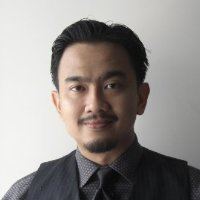Nationality Malaysian | Occupation Architect | |
 | ||
Practice [SA]² or Sarly Adre Sarkum Architecture Sdn. Bhd. Alma maters | ||
Aya awards 2010 youth finalist ar sarly adre sarkum
Ar. Sarly Adre Sarkum is an architecture futurist, sustainability proponent and design activist. Currently he helms the hybrid architectural design firm [SA]2 or Sarly Adre Sarkum Architecture Sdn. Bhd. which combines cutting edge architectural design solutions with extensive researched based explorative approach to solve challenging integrated design problems. He is the Immediate Past President of the Malaysia Green Building Confederation which is Malaysia's Green Building Council under the auspices of the World Green Building Council. He is also currently an elected council member of Pertubuhan Akitek Malaysia (The Malaysian Institute of Architects). He currently sits as one of the five directors of the GBI Green Rating Tool.
Contents
- Aya awards 2010 youth finalist ar sarly adre sarkum
- Early life and education
- 2001 2005
- 2005 2008
- 2008 2009
- 2009 2013
- 2013 current
- Exhibitions
- Appearance in Books
- References
In 2010 he also developed the Seascraper for the Evolo Skyscraper Competition in 2010.
Early life and education
Sarly Adre was born in 1975 at the Hospital Besar Kuala Lumpur. His primary education was at Sekolah Kebangsaaan Tengku Raudzah in Alor Setar, Kedah, Wellesley Primary School in Penang and King George V Primary School in Negeri Sembilan. Despite his personal struggle with dyslexia his excellent performance in the in primary year 5 National Standardised Assessment Exam earned him a place in the premier school Malay College Kuala Kangsar.
He later did his 'A' Levels in Mara Science College Kuala Lumpur (MSMKL - Maktab Sains Mara Kuala Lumpur) in Cheras, Kuala Lumpur in 1993 he won the nation wide science essay writing competition by BP (British Petroleum) Malaysia with his essay entitled "Renewable Energy Resources for a Sustainable Development in Malaysia" which he became Malaysia's representative for the 35th London International Youth Science Forum under BP's full sponsorship.He continued his architectural preparatory studies at Institut Teknologi Mara Shah Alam. He subsequently obtained his Bachelor of Arts in Architecture with Honours from the University of Liverpool. After returning to Malaysia he spent a year out for practical experience and to complete a family project after which he pursued a post graduate degree at Universiti Sains Malaysia. He was conferred the Bachelor of Architecture (Honours). He was also awarded the 'Gold Medal' for being the best student in Architecture at the university in 2001. His graduating Project Neo Tamingsari - Cynosural Nexus For Cyber Technetronic Defence was chosen to represent Malaysia in the first Archiprix International in Rotterdam Netherlands as one of the world's best graduating project. The project was supervised by Dr Ku Azhar Ku Hassan, Dr Kenneth Yeang and Mr. Azmiluddin. At the Archprix International Workshop he led the team consisting of Japanese architects Maya Nishikori and Tsuyoshi Noguchi, under the supervision of Kamiel Klaasse with Michel Schreinemachers to collaborate on a project named Phat House. The Phat House is a house that transforms itself in accordance with the users tendencies and whims with reference to the emerging 'hip hop' culture in Hoogvliet, Rotterdam.
2001-2005
Sarly Adre started work with Penang's largest firm at the time Azza Associate Architect (Penang)
2005-2008
Sarly Adre then became a Senior Architect at FAA Architect in Kuala Lumpur
2008-2009
Sarly Adre became Associate Director at Aza Project Consultancy Sdn Bhd
2009-2013
Upon obtaining his Part 3 Professional Architecture License from the Board or Architects Malaysia. He became a partner at BDA Architects Sdn Bhd and led the Kuala Lumpur office of the Architectural Firm.
2013-current
After relinquishing all shares of BDA Architects Sdn. Bhd.in 2013 Sarly Adre then founded and led [SA]² or Sarly Adre Sarkum Architecture Sdn. Bhd. which epitomised his belief in a new form of architectural practice which uses disruptive technologies at its very core to generate more efficiency and facilitate better design.
